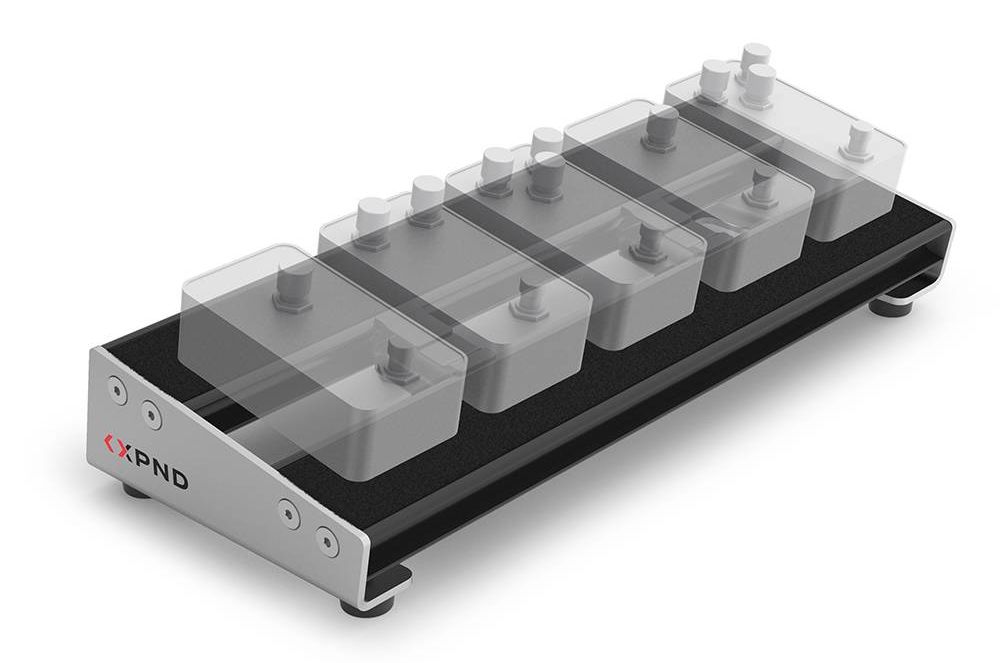Hi everybody. This month we''re going to talk about some issues that have caused even more disturbance in the signal chain. A good friend of mine from New York City called the other day and came up with a very profound thought.When he elaborated on this stream of consciousness I was very intrigued, to say the least! Allow me to explain.
Between 1975 and 1976, several key events happened to string composition, amplifier voicing and (just to throw it into the fray) the first major “aftermarket” pickups, which had just become readily available during this period. Before the “Big String Switchover” (approximately late 1975 to very early 1976), pure nickel roundwound outer wrap wire had completely disappeared from the bigger string manufacturers, only to be replaced by the much cheaper NPS (nickel plated steel) outer wrap wire. This had some very severe sonic consequences, because while string material changes made the strings brighter, at the same time, amplifiers were becoming more and more brightly voiced (due to design and component changes to the original circuitry seen years earlier).
Now, when you consider the big picture, this is also around the time that we first heard of DiMarzio Pickups (located on Staten Island in New York City). Larry DiMarzio had started to wind hotter pickups, as it appeared that many guitarists were rather unhappy with the sound of their stock humbucking pickups.Well, as we found out very soon after their public unveiling, Larry DiMarzio was absolutely right and his company sold a ton of their new pickups as the result.
Was it a coincidence that all three of these happenings were connected? There are no coincidences, in my opinion. I feel these three events were inextricably connected in a much bigger way than we ever thought of at the time. You see, hotter pickups also have/had the tendency to be darker, to compensate for all the brightness that we began hearing. This is precisely why these new darker/hotter pickups seemed to bring us back to a sense of (previously) “warmer” tones. Before we knew it, there were a bunch of different companies making aftermarket pickups, or “boutique pickups,” as they are commonly referred to today.
|
Also in 1976 (or thereabouts), we saw the introduction of stainless steel strings. In this particular case, the stainless steel strings were advertised as being more resilient for the players who suffered from “acid hand” syndrome. Oddly enough, there was no real mention about how these strings sounded … go figure. Stainless steel is incredibly bright and, in my own opinion, not fit to play on at all. They generally are much stiffer feeling, unyielding and also harder to play easily and/or bend. As another nasty side effect, stainless steel strings will just kill the frets on your instruments too.
Imagine what happened to pickup designs after the introduction of stainless steel strings? Yikes! Lucky for all of us now this brighter trend (that actually began in August of 1970 to the mid-‘70s) has clearly begun to reverse itself. And, as such, we now can enjoy the warmer, bigger vintage tones of yesteryear easier than ever before. It''s certainly a great time to be a guitarist – possibly even better than ever before in history, simply because we have so many good choices available that allow us to tailor our own personal sounds!
In addition, there have never been as many wonderful sounding/playing amplifiers as there can be found today. Do not get me wrong about what I''ve said here if you''re into real vintage instruments … I love them just as much as the next player! As you can see from this discussion, even simple things do influence your tone in a huge way. To me, this was a big “ah-ha” and it is the way it really was, when you take it in a logical step-by-step approach. My deepest thanks to Barry Weber of New York City for this profound collision of thoughts. You now should be able to do the math and draw your own conclusions; history can be a great aid to problem solving indeed. See you next month.
DEAN FARLEY... is the chief designer of "Snake Oil Brand Strings" (www.sobstrings.net) and has had a profound influence on the trends in the strings of today



















![Rig Rundown: Russian Circles’ Mike Sullivan [2025]](https://www.premierguitar.com/media-library/youtube.jpg?id=62303631&width=1245&height=700&quality=70&coordinates=0%2C0%2C0%2C0)






